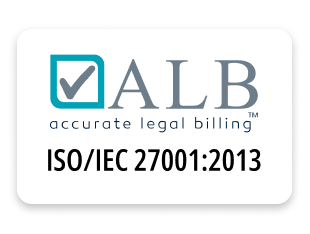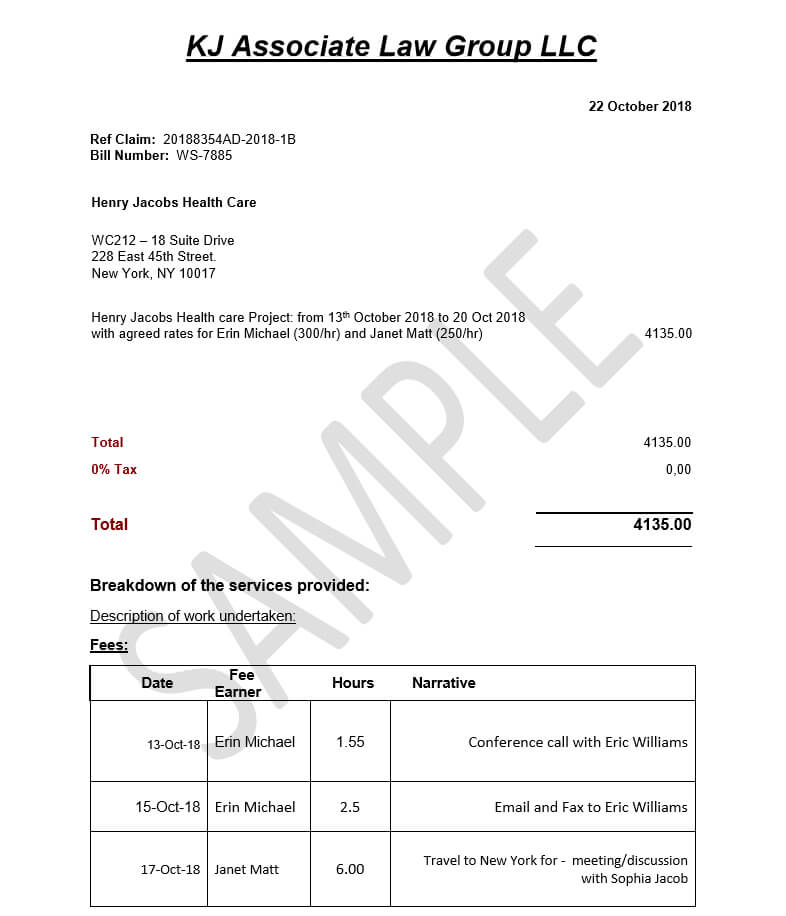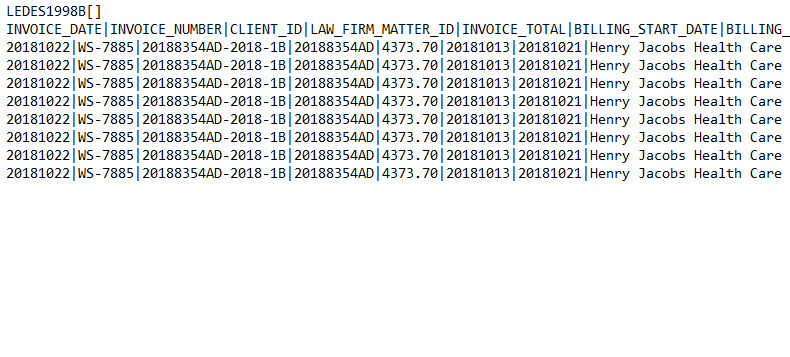
How to Automate OCG Compliance Using e-Billing Software
Outside Counsel Guidelines (OCGs) define a client’s billing rules, timekeeping policies, approved rates, and matter management protocols. For law firms, complying with OCGs is that important and failure to follow these requirements leads to billing rejections, delayed payments, and write-downs that erode profitability.
With legal billing growing more complex and client expectations becoming increasingly specific, firms are turning to legal e-billing automation tools to manage compliance systematically and at scale. Automating OCG compliance enables law firms to reduce billing errors, avoid preventable revenue leakage, accelerate invoice cycles, and strengthen client trust.
In this blog, we explore how legal operations and billing teams can use technology to streamline OCG compliance, improve invoice accuracy, and reduce the administrative burden on legal staff.
Why OCG Compliance Is Important?
Non-compliance with Outside Counsel Guidelines remains one of the most frequent causes of invoice rejections and payment delays. A recent industry survey revealed that up to 40% of law firm billing adjustments stem from avoidable OCG violations, such as incorrect rate application, use of disallowed billing codes, or submission of unauthorized expenses.
These compliance failures also damage client confidence and trigger additional scrutiny during legal spend audits. For firms managing multiple clients with different OCGs, the risks grow exponentially without a scalable compliance framework.
Automating OCG compliance ensures that each invoice is validated and conforms to every client’s specific billing protocol before it enters the client’s review system.
What Does It Mean to Automate OCG Compliance?
Automating OCG compliance means using legal billing software to translate each client’s billing policies into system-level rules that automatically check every invoice line item. This transforms compliance from a manual checklist into a proactive, enforceable process.
Usual automation capabilities include:
• Rate validation against client-specific schedules
• Pre-submission checks for disallowed timekeepers
• Verification of task, activity, and expense codes (e.g., UTBMS)
• Enforcement of word count minimums and description detail
• Budget alert triggers and notification thresholds
• Submission tracking based on client-specific billing cycles
By codifying these rules, law firms can ensure consistent enforcement across the firm, regardless of who’s generating the invoice or which client it’s for.
What Are the Key Components of OCG Compliance Automation?
Below are the core elements that enable law firms to automate compliance with client billing guidelines more effectively.
1. Rule-Based Validation Engines
At the heart of most legal billing platforms is a rule-based validation engine, a configurable system that applies custom compliance rules to invoice data. These logic rules automatically detect entries that violate client policies, such as:
• Entries exceeding daily or task-specific hour caps
• Charges from unapproved timekeepers or staffing levels
• Non-billable administrative work submitted as billable time
• Entries missing required UTBMS codes or descriptions
When enforced systematically, these rules reduce the need for human error checking and help ensure compliance across all practice areas and departments.
2. Client-Specific Billing Profiles and Rate Schedules
Every client has unique billing requirements, whether it’s invoice format, rate structures, staffing limitations, or jurisdiction-specific tax handling.
Billing profiles store these requirements in the system, including:
• Approved billing formats (LEDES 1998B, LEDES XML 2.0, PDF)
• Client-specific UTBMS task and activity codes
• Rate caps by role, timekeeper, or practice group
• Restrictions on expenses or disbursements
• Invoice frequency, due dates, and submission portals
By assigning these profiles to matters or clients, firms can reduce the complexity of managing custom billing expectations. The billing system automatically references the right profile during invoice generation, ensuring consistent, accurate, and compliant submissions.
3. Pre-Bill Auditing and Real-Time Error Detection
Pre-bill compliance reviews are one of the most valuable capabilities of e-billing systems. These automated checks identify violations before an invoice reaches the client, including:
• Duplicate time or expense entries
• Missing documentation or narratives
• Billing beyond approved budget thresholds
• Disallowed combinations of codes and timekeeper roles
Automated error detection reduces the burden on billing administrators and prevents rejected invoices that require rework. Firms leveraging pre-bill auditing consistently report up to 35% fewer billing disputes and improved turnaround times.
4. Block Billing and Vague Entry Detection
OCGs frequently prohibit block billing, where multiple tasks are grouped under one entry, and vague time descriptions that fail to show the value provided. These practices obscure transparency and lead to compliance issues.
Billing software can flag block billing entries and enforce:
• Minimum character counts for descriptions
• Required task and activity code selections
• One-entry-per-task formatting
This reduces the risk of invoice pushback and ensures a clear, auditable billing record for each matter.
5. Real-Time Budget Tracking and Notification Triggers
Clients expect visibility and control over legal spend, often requiring firms to notify them when spend is approaching or exceeding approved budgets.
E-billing platforms with real-time budget monitoring allow firms to:
• Set matter-specific budget limits and alert thresholds
• Monitor cumulative billed hours or expenses
• Trigger internal or client-facing alerts when thresholds are reached
This not only helps firms stay in compliance but also improves transparency, making it easier to proactively engage with clients and manage scope adjustments before billing issues arise.
6. Approval Workflow Automation and Role-Based Access
Inconsistent internal invoice approvals can delay billing and increase the chance of non-compliance. With workflow automation, law firms can design structured approval chains based on role, matter type, or client.
Benefits include:
• Automatic routing of drafts to designated reviewers
• Escalation paths for overdue reviews
• Locking of finalized invoices to prevent unauthorized edits
• User access controls to protect sensitive data
Structured billing workflows create accountability and help firms meet tight client submission deadlines.
7. Compliance Dashboards and Invoice Analytics
Understanding where compliance issues occur helps firms take corrective action and continuously improve their processes. With built-in analytics, law firms can:
• Monitor realization and collection rates
• Analyze common causes of invoice rejection
• Identify frequent OCG violations by matter, timekeeper, or client
• Generate reports for audit readiness and client QBRs
Firms using compliance analytics report up to 40% improvement in billing accuracy and greater confidence during client audits and evaluations.
What Are the Benefits of OCG Compliance Automation?
OCG automation provides measurable advantages across billing operations, client satisfaction, and firm profitability.
| Benefit | Description |
| Faster Payment Cycles |
Invoices are approved quicker due to fewer submission errors |
| Higher Realization Rates |
Less revenue is written off or reduced by the client |
| Greater Transparency |
Clear, consistent billing improves client satisfaction |
| Improved Efficiency |
Automation reduces manual review and data entry effort |
| Stronger Compliance |
Reduces legal risk and supports audit readiness |
Final Thoughts
As client billing rules become more complex and matter-level expectations grow more specific, law firms need to move beyond manual OCG management. Automating OCG compliance enables consistency, reduces operational friction, and helps firms maintain a steady, predictable revenue stream.
The right legal billing software provides firms with the tools to enforce rules, catch issues early, and support client-specific workflows at scale. For firms handling high invoice volumes, this kind of automation is important.
If you’re looking to improve your compliance processes, reduce billing write-offs, or explore advanced OCG billing automation tools, contact us today.

.png)



